- Home
- Joanne Harris
Runelight
Runelight Read online
Contents
Cover
About the Book
Title Page
Dedication
Maps
Foreword
Characters
Runes
Book 1: World’s End
Chapter 1
Chapter 2
Chapter 3
Chapter 4
Chapter 5
Chapter 6
Chapter 7
Chapter 8
Chapter 9
Chapter 10
Chapter 11
Chapter 12
Book 2: Thor’s Hammer
Chapter 1
Chapter 2
Chapter 3
Chapter 4
Chapter 5
Chapter 6
Chapter 7
Chapter 8
Chapter 9
Chapter 10
Chapter 11
Chapter 12
Book 3: Odin’s Horse
Chapter 1
Chapter 2
Chapter 3
Chapter 4
Chapter 5
Chapter 6
Chapter 7
Chapter 8
Chapter 9
Chapter 10
Chapter 11
Chapter 12
Chapter 13
Chapter 14
Book 4: The Old Man of the Wilderlands
Chapter 1
Chapter 2
Chapter 3
Chapter 4
Chapter 5
Chapter 6
Chapter 7
Chapter 8
Chapter 9
Chapter 10
Book 5: The Pan-daemonium Circus
Chapter 1
Chapter 2
Chapter 3
Chapter 4
Chapter 5
Chapter 6
Chapter 7
Chapter 8
Chapter 9
Book 6: Brimstone and Bridey Cake
Chapter 1
Chapter 2
Chapter 3
Chapter 4
Chapter 5
Chapter 6
Chapter 7
Book 7: The Rider of Carnage
Chapter 1
Chapter 2
Chapter 3
Chapter 4
Chapter 5
Chapter 6
Chapter 7
Chapter 8
Chapter 9
Chapter 10
Book 8: Bif-rost
Chapter 1
Chapter 2
Chapter 3
Chapter 4
Chapter 5
Chapter 6
Chapter 7
Chapter 8
Chapter 9
Book 9: Asgard
Chapter 1
Chapter 2
Chapter 3
Chapter 4
Chapter 5
Chapter 6
Chapter 7
Chapter 8
Chapter 9
Chapter 10
Chapter 11
Chapter 12
Chapter 13
Chapter 14
Chapter 15
Acknowledgements
About the Author
Also by Joanne Harris
Copyright
About the Book
Six hundred miles apart, two girls each bear on their skin a runemark: a symbol of the Old Days when the known Worlds were ruled by the gods from their sky citadel, Asgard.
Now Asgard lies in ruins, and the power of the gods has long since been destroyed.
Or so everyone thinks.
But nothing is lost for ever, and the gods haven’t given up yet (nor stopped squabbling!) and they want the power of the runes borne by Maddy and Maggie – these new runes, which carry huge potential, their runelight shining out as a portent to the future.
Soon both girls are swept into a maelstrom of cataclysmic events that are to draw them closer and closer to each other, and nearer and nearer to a horrific struggle where each must prove where their loyalty lies …
Filled with inventive and humorous detail, trickery and treachery, carnage and lunacy, Runelight is the second title – following Runemarks – in a series of gloriously imaginative and dramatic tales about the Norse gods.
To Anouchka
Shine on.
Foreword
I’m hoping you’ve read Runemarks, in which case you can skip this bit, because you already know what happens. If not, there are just a few things you should be aware of before you begin.
We’re in a place called Inland, a part of one of the Nine Worlds existing in the branches of Yggdrasil, the World Tree.
The Worlds have ended several times, and will almost certainly do so again.
The forces of Order and Chaos keep these Worlds in precarious balance.
Gods and demons (which are almost but not quite the same thing) exist here in bewildering numbers, although they tend to get on rather badly with each other, which explains the End-of-the-World thing (see above).
Originally there were two tribes of gods – the Æsir and the Vanir. After years of civil war, they decided to team up (under Odin, the leader of the Æsir) to fight their common enemies and generally keep Order in the Worlds. Odin acquired magical runes (a nice way of saying he stole them), which he used to keep the gods (and himself) in power. With the help of his blood-brother Loki, a renegade from Chaos, he created Asgard, the citadel of the gods, where Æsir and Vanir lived, reigned, had adventures, fell in love, made a number of foolish mistakes, played needlessly rude and cruel tricks on each other (well, Loki did, anyway) and finally fell out with Loki over a silly misunderstanding (his interpretation, not theirs), which resulted in a chain of events that finally ended in Ragnarók, a titanic battle against their enemies (everyone else), where all the gods were meant to have died, fighting the forces of Chaos.
In Runemarks, Ragnarók has come and gone, and five hundred years have since gone by. The world has changed. We meet Maddy Smith, a fourteen-year-old misfit living in Malbry, a village of northern Inland. Maddy has a runemark – or ruinmark – on the palm of her hand that gives her special powers as well as making her an outsider, a throwback from the Bad Old Days before the End of the World and the coming of the Order, a religious group based in World’s End and devoted to the eradication of all things Chaotic, including magic, Faëries, old gods, stories, and anything else that might give the folk of Inland dangerous ideas – or, worse (Laws protect us), dreams.
But Maddy does have one good friend: One-Eye of the Wilderlands, soon to be revealed as one of the old gods – Odin, leader of the Æsir, no less, thought to have fallen at Ragnarók, but surviving, his powers diminished, as a shadow of his former Aspect. He befriends Maddy, recognizing in her a potential ally, and enlists her in a personal quest, which doesn’t work out quite as he intended.
Maddy befriends a renegade goblin (with the unfortunate name of Sugar-and-Sack) and embarks on a quest of her own, with a number of unforeseen consequences, leading ultimately to a final, disastrous confrontation on the shores of the river Dream, where the forces of the Order are massed to wipe out all of the Nine Worlds.
The gods are wholly outnumbered, of course, but thanks to some unusual allies – including Jormungand, the World Serpent, and Hel, the ruler of the Dead –
The Order is completely wiped out.
Odin falls.
The World ends (again).
And Maddy turns out to be Modi, one of Thor’s twin children, presumed lost at Ragnarók.
The rescued Æsir, being disembodied, are obliged to take on the Aspect of the nearest appropriate living host – in this case, two humans, a goblin and a pot-bellied pig.
We leave the gods on the shore of Dream, angry, broken, grieving and faced with the
job of repairing a breach between Worlds that may soon result in all Hel breaking loose …
So – lots of ends remained untied. Some good people died who should have survived. Some very bad people who ought to have died somehow managed to make it.
It’s not what you’d call a happy ending.
But it was the best I could do at the time.
Now. Read on …
CHARACTERS
GODS (ÆSIR)
Thor, the Thunderer, son of Odin, aka Dorian Scattergood, ex-pig farmer, rebel and acting leader of the Æsir
Ethel, the Seeress, his mother, aka Frigg, Ethelberta Parson, Oracle and merry widow
Sif, Thor’s wife, the goddess of plenty, aka Fat Lizzy, a pot-bellied pig
Tyr, the Warrior, aka Sugar-and-Sack, an erstwhile goblin reluctantly turned god of war
Maddy, who ought to have been born Modi, son of Thor, but who for complicated reasons turned out to be his daughter instead
Odin, the General, still dead, but working on a solution
GODS (VANIR)
Heimdall, Watchman of the Golden Teeth
Skadi, the Snowshoe Huntress, daughter of the Ice People and still not sure which side she’s on
Idun, the Healer, goddess of youth
Bragi, the Poet, god of wine and song
Freyja, goddess of desire
Frey, the Reaper, her twin brother
Njörd, Skadi’s estranged husband, the Old Man of the Sea
OTHERS
Loki, blood-brother of Odin, known as the Trickster, fitting into neither camp but grudgingly tolerated – at least for the present – on account of how he saved the Worlds
Jormungand, his monstrous son, aka the World Serpent
Sigyn, Loki’s late ex-wife
Hel, his daughter, Ruler of the Dead
Fenris, his other son, Devourer and demon wolf
Skól and Haiti, aka Skull and Big H, friends of Fenris, Demon Wolves, Devourers of the Sun and Moon, and dedicated followers of World’s End fashion
Jolly – just don’t call him ‘short’
Hughie and Mandy, aka Hugin and Munin, ravens with a sweet tooth
Angrboda, one of Loki’s more dangerous liaisons, aka the Temptress; hag of Ironwood, mother of Hel, Fenris and Jormungand – and person of Chaotic origin
Maggie Rede, a daughter of the Order, and more
Adam Scattergood, a young man with a dream
Crazy Nan Fey, a crone of unruly ambition
Captain Chaos, an entertainer
Sleipnir, an eight-legged Horse and harbinger of the Apocalypse
Mimir the Wise, aka the Whisperer, a disembodied entity with revenge on its mind
The Old Man, see above
Perth, an entrepreneur and dealer in other people’s property
Surt, a Lord of Chaos
RUNES OF THE ELDER SCRIPT
Fé: wealth; cattle; property; success
Úr: strength; the Mighty Ox
Thúris: Thor’s rune; the Thorny One; victory
Ós: the Seer-folk; the Æsir
Raedo: the Journeyman; the Outlands
Kaen: wildfire; Chaos; World Beyond
Hagall: hail; the Destroyer; Netherworld
Naudr: the Binder; need; distress; the Underworld; Death
Isa: ice
Ár: plenty; fruitfulness
Yr: the Protector; the Fundament
Sól: summer; the sun
Tyr: the Warrior
Bjarkán: revelation; truth; vision; dream
Madr: mankind; the Middle Worlds; the Folk
Logr: water; the One Sea
RUNES OF THE NEW SCRIPT
Ethel: the Homeland; motherhood
Aesk: the Ash Tree; Creation
Ác: the Oak Tree; strength; determination
Daeg: day; the Thunderbolt
Iar: the Builder; industry
Perth: a game; hazard; chance
Wyn: gain; winnings; temptation; gambling
Eh: Wedlock; loyalty; a bond
Ea: the tides; Eternity; Death and beyond
Gabe: a gift; a sacrifice
The river Dream runs through Nine Worlds, and
Death is only one of them.
Old proverb
FIVE PAST MIDNIGHT in World’s End, three years after the End of the World, and, as usual, there was nothing to be seen or heard in the catacombs of the Universal City – except, of course, for the rats and (if you believed in them) the ghosts of the dead.
Maggie Rede had no fear of either. A tall, slim girl with straight dark brows and eyes of a curious amber-grey, wearing a white headscarf of the type World’s Enders called the bergha and a scarlet tunic over leggings and boots, she was the only remaining custodian of those abandoned catacombs, and rats were her especial prey. With crossbow or sling she could hit a rat at three hundred paces without missing a step; the rats knew her very well by now, and kept their peace when Maggie Rede was on the prowl.
As for ghosts, Maggie had been walking the secret passageways every night for almost three years, and she had never yet seen a glimpse of one. There were still tales of a terrible battle here, with ten thousand of the Order wiped out in a single day. But there were no signs of them, nor of the enemy they had fought. Not even the ghosts were telling that tale.
Outside, of course, tales were rife, but Maggie Rede mistrusted such tales, and even more the folk who told them, and she ignored them just as she did the ghosts, concentrating instead on what she could see, and keeping the rats from the catacombs.
The Good Book, of course, had its own version of events. According to the Book of Apocalypse, the ten thousand had all been lost to the Bliss, a time predicted since the birth of the New Age, when the Nameless would call the faithful to arms, and they would shrug off their mortal flesh and be reborn into their perfect bodies upon the shores of the First World.
Maggie believed in the Good Book. Like her father and her brothers before her, she was a true follower of the Order, and if she had been a boy she too would have known the Bliss by now, and would have been taken up into the Celestial City, instead of being left to deal with the mess at World’s End.
Part of the problem, Maggie thought, was that although there had been much discussion on the subject of the Bliss and the precise nature of the delights in store for the faithful when the happy day arrived, no one had ever been entirely clear on what was to happen to the discarded flesh. She had imagined a kind of celestial spring cleaning, whereupon the bodies would be miraculously tidied away, but when it had finally come round, with ten thousand members of the Order suddenly vacating their earthly bodies (including Professors, Magisters, prentices and Examiners in the field), the results had been catastrophic.
It had taken six months to dispose of the corpses. Part of this was because no one in World’s End wanted to take responsibility. The cleanup was the Order’s business, or so the sanitary services maintained, and ought to be dealt with (and paid for) by official representatives of the Order.
The grim truth remained, however, that there were no representatives of the Order, either official or unofficial. And so the corpses festered and stank until, many meetings and committees later, they were declared a public health hazard and carted away and burned.
That had been three years ago. Maggie had been fourteen that year, and just before the plague broke out she had been sent to stay with her great-aunt Reenie in the Ridings, while her mother searched among the gruesome remains for the three Examiners who had been her sons.
Officially, of course, an Examiner of the Order has no family. The first thing a prentice has to do before taking his place as a son of the faith is to turn his back on his parents, to give up his name and to accept a number in its stead. Maggie’s father respected this. The brother of an Examiner recently honoured with the gift of the Word, he knew better than to shame his sons with his interference. The younger son of a Ridings wool merchant, he had longed to enter the Order himself, but his father could only aff
ord to lose one of his sons, and so his brother Elias had won the chance, while Donal had learned his father’s trade.
Years later, himself a father, he had moved to the Universal City, swearing to give his own sons the opportunity he had been denied and, when the time came, to disown them entirely, as was right and proper according to the rules of the Order. But Maggie’s mother had made no such vow. Many were the mothers like her, who defied the Law and sneaked into the University buildings at night, risking arrest – and sometimes worse – for the chance to offer a decent burial to their lost menfolk.
Susan Rede had paid dearly for that chance. A haemorrhagic fever, caught on one of her night trips among the remains, had put an end to her searching and to her life, though not before she had passed on the sickness to her husband, the nurse, the grocer, his cousin, all his customers and the fellow who came to collect the dead.
By the time Maggie came home, a hundred thousand people were dead of the plague; World’s End was out of quarantine; the bodies had been cleared away; and the University of Immutable Truths was nothing but a hollow shell, its wealth looted, its libraries abandoned, its great halls and amphitheatres empty of everything but dust.
She could have stayed with her aunt, she supposed. Nothing remained of her previous life. But Reenie had children of her own, and a job milking cows at a neighbouring farm, and Maggie was unused to the ways of Ridings people, who seemed to her almost disorderly, with their country customs and casual attitude towards going to church and holy days; who laughed at the way she dressed and at her World’s End accent and at what they called her ‘city ways’.
And so, with no family, no home and no friends, Maggie went back to World’s End. She found herself a job in a tavern close to the old University, which offered her board and lodging and a penny a day for expenses. She didn’t like the customers, who were often rude and drank too much; but the tavern was called The Communion, which had led her at first to think that maybe it was somehow connected with the Order. The landlady was a Mrs Blackmore, a prude with a widow’s bergha and a beady, sharp, acquisitive eye, who had made a fortune during the plague selling charms to the credulous. Her husband had died helping the sick, or so said Mrs Blackmore; in fact he had caught the fever himself while looting the bodies of the dead. Now his widow made her trade on her sainted husband’s reputation – telling tales of his bravery; warning of the Seer-folk; keeping an eye out for ruinmarks and such; and solemnly preaching abstinence, while selling the worst and sourest watered-down beer in the whole of World’s End.

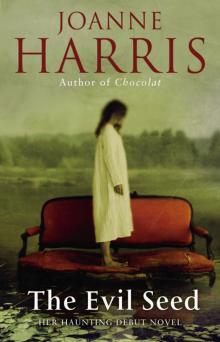 The Evil Seed
The Evil Seed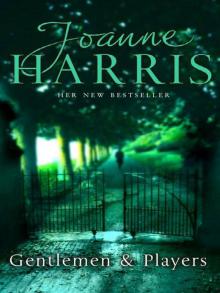 Gentlemen and Players
Gentlemen and Players A Cat, a Hat, and a Piece of String
A Cat, a Hat, and a Piece of String Different Class
Different Class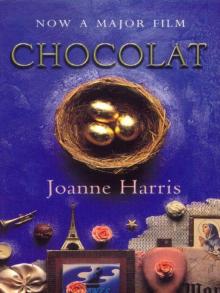 Chocolat
Chocolat Five Quarters of the Orange: A Novel
Five Quarters of the Orange: A Novel A Pocketful of Crows
A Pocketful of Crows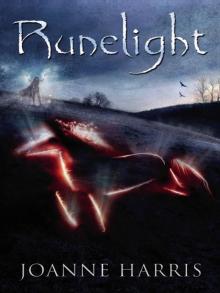 Runelight
Runelight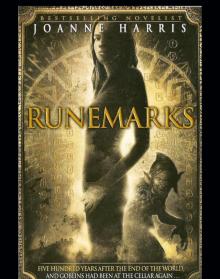 Runemarks
Runemarks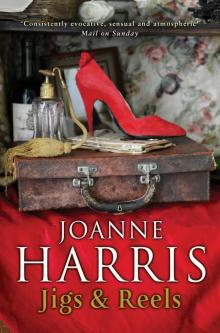 Jigs & Reels: Stories
Jigs & Reels: Stories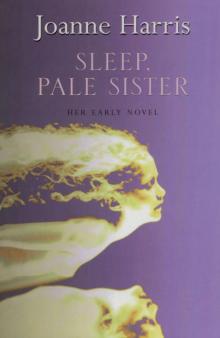 Sleep, Pale Sister
Sleep, Pale Sister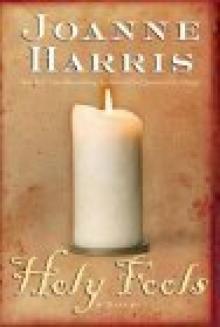 Holy Fools
Holy Fools The Testament of Loki
The Testament of Loki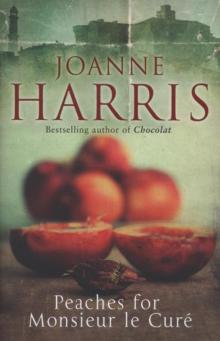 Peaches for Monsieur Le Curé
Peaches for Monsieur Le Curé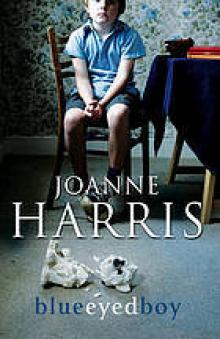 Blueeyedboy
Blueeyedboy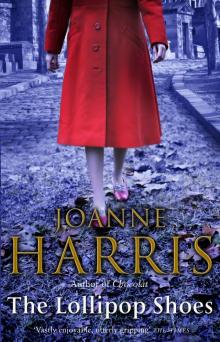 The Lollipop Shoes
The Lollipop Shoes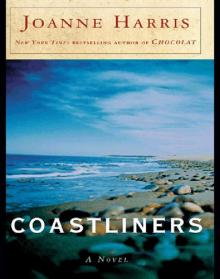 Coastliners
Coastliners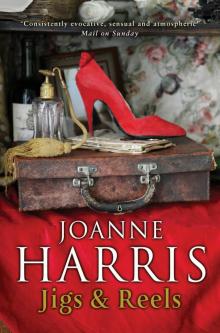 Jigs & Reels
Jigs & Reels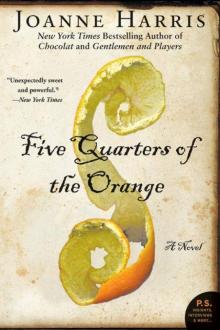 Five Quarters of the Orange
Five Quarters of the Orange